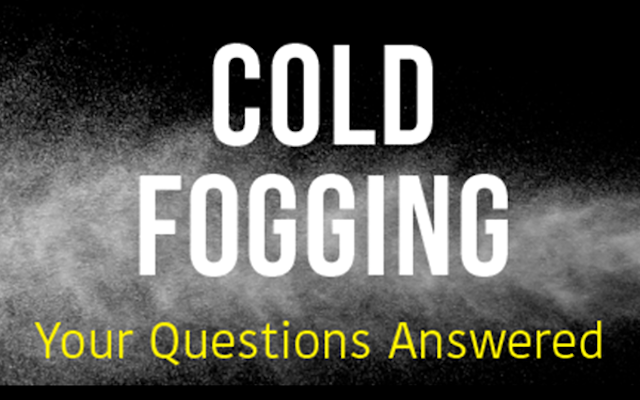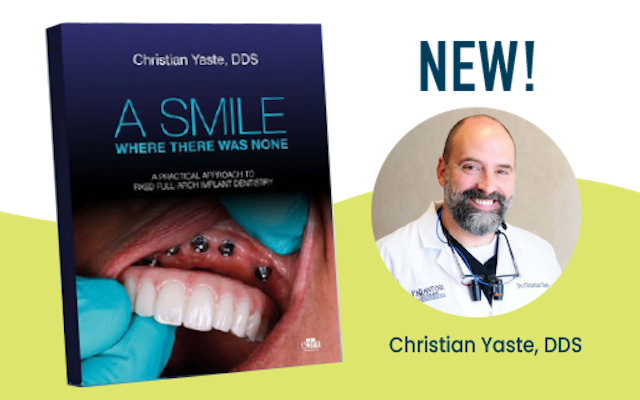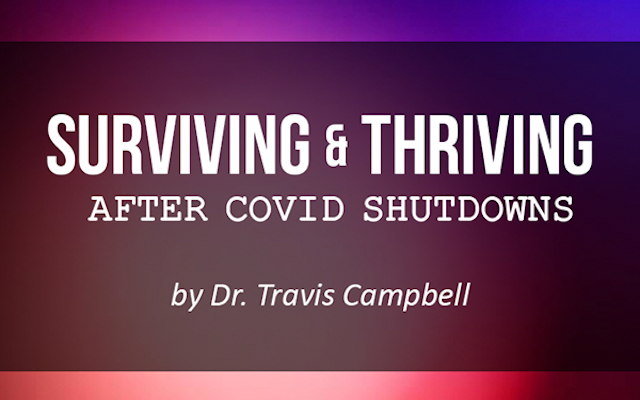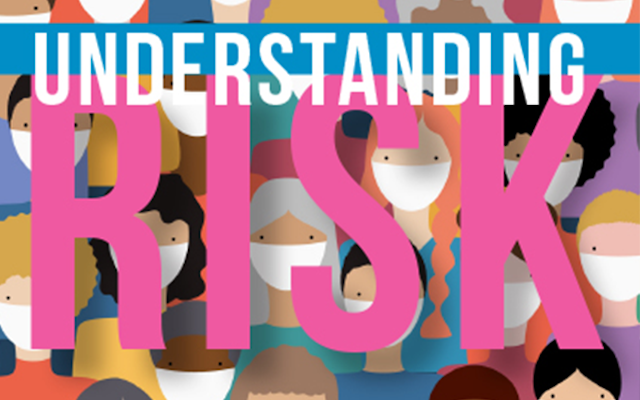The benefits of cold fogging and how to implement it into your practice.
Congratulations to the dental profession. We won the lottery. According to data from the Occupational Information Network, dental hygienists are the most likely of all health care workers to contract SARS-CoV-2 in the workplace and dentists and assistants are right behind them!
This is primarily because of the aerosols we create when using ultrasonic scalers and highspeed handpieces. According to The New England Journal of Medicine, viral particles stay contagious in the air for 3 hours or more. While an N95 mask (or KN95) is probably our best personal protection, ultra-low volume fogging with a hypochlorous acid solution is our best option at this point to “clean” the air.
Understanding Cold Fogging
I’ve received a lot of questions from dentists about cold fogging and will answer some of the most common here. As information continuously changes, I’ve also started a blog to address fogging concerns and will send out a newsletter with updates and new information every week. If you send me a question, I will answer it on the blog; if you are confused about something, chances are others are as well.
There is still so much we need to understand about this virus. We are currently bombarded with information, often contradictory, and certainly very confusing. So, the intent of my blog is to give us a place to ask and answer questions, cooperate, collaborate and share our best practices. I like to think SARS-CoV-2 is Goliath and we are, collectively, David. And we all know how that story turned out! To receive the newsletter and join the discussion on THE COLD FOG BLOG, please register on the homepage of my website, lisagermain.com.
Now, on to the questions.
Why is Hypochlorous Acid the Best Solution to Use for Cold Fogging?
Hypochlorous acid (HOCl), also known as electrolyzed water, is considered by the FDA to be “the form of free available chlorine that has the highest bactericidal activity against a broad range of microorganisms” (US FDA, 2015). HOCl has no toxic material disposal requirements and, according to the OSHA Hazard Communication Standard, is not considered to be hazardous waste, adding yet another advantageous element to HOCl use1.
The additional protein denaturing activity of HOCl and, in particular, its inactivation of prion proteins, also suggests new opportunities for the design and execution of disease control measures in health care institutions2.
The reason hypochlorous acid is such an effective oxidant is because it carries no electrical charge. In contrast, the hypochlorite ion (bleach) carries a negative charge. Because germ surfaces also carry a negative charge, they initially repel each other. It takes up to half an hour for bleach to do the job, whereas hypochlorous acid's lack of electrical charge allows it to penetrate the protective lipid barrier surrounding the viral particles quickly and to destroy the proteins in a matter of seconds.
How safe is it?
Hypochlorous acid, unlike chlorine bleach, is 100% safe, non-irritating and not corrosive. Various concentrations of hypochlorous acid are used in the food industry, for eye and wound care and as a surface disinfectant. So, if it gets on your skin or in your eyes, it will not burn. Even if it were accidentally ingested, it is non-toxic. However, there are currently no studies that discuss inhalation safety, so if you do decide to use it, wearing a mask during application is advised.
How do I obtain HOCl?
Various formulations and strengths of HOCl are registered with the EPA, and it is used for disinfection and sterilization worldwide. It is available pre-made, or you can make your own with a home electrolysis machine using water, kosher salt and vinegar.
How much should I use?
Current recommendations for cold fogging to deviralize (is that a word?*) aerosols created in the dental office are in a concentration of 200 ppm. The solution is a weak acid with a pH between 5 to 7. There are test strips available to test the ppm, as well as to test the pH.
How does fogging work?
The solution is placed into the reservoir of an ultra-low volume fogging machine that will create a mist (not a spray) of the solution. The machine must be able to disperse the HOCl in a particle size of 25 microns or less, so check the specs of your device before use. Surfaces must be clean and dry prior to cold fogging. So, wipe down your chairs, counters, lights, etc. with whatever you normally use to disinfect them first.
Now comes the fun part. Point the fogger at one corner of the ceiling of your operatory and begin spraying a fine mist all the way around the perimeter. Then distribute it evenly in “stripes” across the rest of the ceiling. You can then give an extra mist over the chair area where aerosol creation is the heaviest. Now, don’t go all “Rambo” with it or you will create puddles. If done correctly, it should dry in a minute or so. You can then seat your patient. Cold fogging can be done between every patient if you choose.
Can I Cold Fog PPE?
While the intent is to clear the viral particles in the air, isolation gowns and shoes can safely be cold fogged with HOCl, although efficacy has not been tested. It is very important to note that N95 masks become ineffective if they get wet. Moisture will destroy the electrostatic charge in the filter that creates the true protective barrier between the virus and your respiratory system. It is safe to cold fog your street clothing and scrubs; however, it is not a substitute for laundering them.
How Can Cold Fogging Be Used With Other Methods?
Cold fogging with electrolyzed water is often confused with electrostatic spraying, a method for surface disinfection and not for aerosols. HVAC filters and room filters with HEPA technology and UVC light are all great adjuncts for cleaning and recirculating the air and can be used as additional protection along with cold fogging. Heat fogging uses different machinery and is not appropriate for indoor use.
And now for the $64 million question:
If I do ‘X’, ‘Y’ and ‘Z’, (fill in your protocol), Is It Still Necessary To Cold Fog With Hypochlorous Acid?
The bottom line is we don’t know the answer. It is, however, a logical way to deal with the microbes created by dental aerosols. Every clinician needs to do their own due diligence to establish a protocol they feel creates a safe environment for themselves, their team and their patients.
*I cannot find “deviralize” in any reference or dictionary…so if it becomes part of our language, remember where you heard it first!
References
1. OSHA Hazard Communication Standard: 29 CFR 1910.1200
2. Hughson, A. G., Race, B., Kraus, A., Sangaré, L. R., Robins, L., Groveman, B. R., … Caughey, B. (2016). Inactivation of Prions and Amyloid Seeds with Hypochlorous Acid. PLoS Pathogens, 12(9), e1005914. http://doi.org/10.1371/journal.ppat.1005914

 By:
By: 


